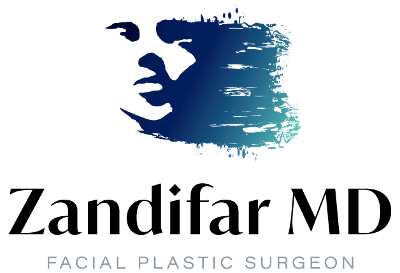Dermal fillers have become one of the most popular non-surgical cosmetic treatments available today. When performed correctly, they can enhance facial features, restore youthful volume, and subtly refine the overall balance of the face. However, not all filler treatments are created equal—and unfortunately, we’ve all seen examples of overdone or “overfilled” results.
At Zandifar MD, we believe that less is often more. The goal is natural enhancement, not distortion. If you’re considering facial fillers and want to ensure you achieve beautiful, balanced results, here’s what you need to know.
Understanding the “Overfilled” Look
We’ve all encountered it: lips that look too inflated, cheeks that appear unnaturally puffy, or faces that have lost their natural contours due to excessive filler. While filler is meant to restore volume lost with age or subtly enhance features, too much of it can lead to an unnatural or even cartoonish appearance.
This overfilled look is sometimes referred to as pillow face or duck lips, and it often results from improper technique, overcorrection, or poor treatment planning. It’s not just about how much filler is used—it’s also about where and how it’s placed.
The Key to Natural Results: A Conservative, Tailored Approach
Start Small and Build Gradually
A major mistake people make is trying to achieve dramatic change in a single appointment. In expert hands, filler is best used gradually. Starting with smaller amounts allows your injector to assess how your face responds and gives you time to adjust. Enhancements can always be added later—but removing too much filler can be far more complicated.
Choose an Experienced, Board-Certified Specialist
One of the most important factors in avoiding overdone results is your provider’s expertise. A board-certified facial plastic surgeon like Dr. Zandifar understands not just facial anatomy, but also the artistry required for natural-looking outcomes. Experience matters—especially when it comes to subtle procedures like filler.
Make sure your provider has an aesthetic eye, a conservative philosophy, and a portfolio of real patient results that reflect your desired outcome.
Common Areas Where Filler Is Overused
Lips
Lip filler is a beautiful tool when used correctly. However, overfilling can stretch the tissue and distort the natural shape of the lips. Proper lip enhancement should respect the natural anatomy of the mouth, preserving proportions between the upper and lower lips while maintaining a soft, smooth contour.
Cheeks
Full cheeks are a hallmark of youth, but adding too much volume can cause a puffy, swollen look. Filler in this area should mimic the natural fat pads of the face and support your facial structure—not overwhelm it.
Nasolabial Folds and Marionette Lines
These folds can deepen with age, and filler is often used to soften them. However, overcorrecting can make the mid-face look heavy. A skilled injector will also evaluate whether cheek support or skin tightening might offer a better result.
Questions to Ask Before Your Treatment
Being an informed patient is your best defense against unnatural results. Here are a few questions to ask during your consultation:
- What is your approach to natural-looking results?
- How many treatments will I need to reach my goal?
- Will you be using a reversible filler (like hyaluronic acid)?
- What’s your policy on follow-ups and touch-ups?
- Can I see before-and-after photos of your actual patients?
These questions not only guide you toward the right provider—they also help set expectations for a gradual, intentional journey with filler.
Trust the Process: Less is More
The best aesthetic results often go unnoticed—not because they’re invisible, but because they look so seamless. That’s the mark of quality facial filler work.
A good provider will also say no when necessary. Sometimes, the best decision is to hold off on more filler or to explore alternative treatments like laser resurfacing, microneedling, or skin tightening for better facial harmony. An honest conversation about your goals and options is crucial.
What to Do If You’ve Already Been Overfilled
If you’re reading this because you’ve had a filler treatment and you’re unhappy with the result—don’t panic. Many hyaluronic acid-based fillers (like Juvederm or Restylane) are reversible with an enzyme called hyaluronidase, which can dissolve excess product.
The first step is to book a consultation with a qualified provider who can assess your face, explain your options, and safely correct or revise the treatment.
Why Expertise and Aesthetics Go Hand in Hand
It’s easy to get caught up in social media trends and “ideal” facial proportions. But real beauty lies in balance. What works for one person may not suit another—and this is where personalized care matters.
Dr. Zandifar brings both technical skill and an artist’s eye to every procedure. His goal isn’t to transform you into someone else—it’s to help you look like the most refreshed, radiant version of yourself.
Conclusion:
Facial fillers should enhance your natural features, not announce themselves to the world. With a thoughtful, experienced provider, you can achieve subtle improvements that help you feel more confident without ever looking “done.”
At Zandifar MD, we’re committed to helping you feel empowered in your own skin—with treatments that prioritize grace, proportion, and longevity. Whether you’re new to facial fillers or looking to revise past work, our personalized approach puts your beauty goals first.
Book your consultation with Dr. Zandifar today and discover what refined, expert facial aesthetics can do for you. Visit zandifarmd.com or call our office to take the next step toward refreshed, confident beauty—without compromise.

